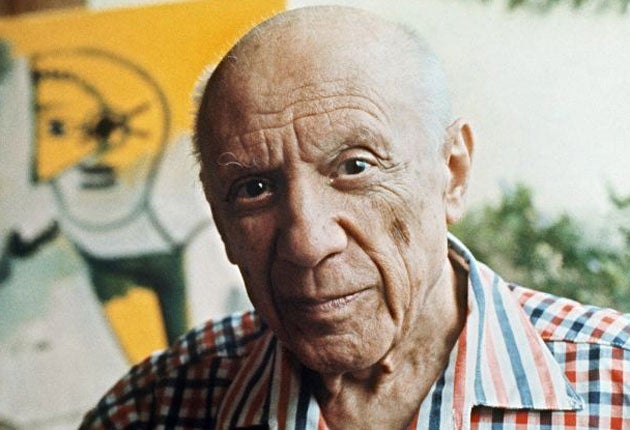Picasso: Let's not over-praise a great artist
As auction-frenzy over a rare etching builds, Michael Glover says we are too often misled by the Picasso industry

Will there ever be an end to the Picasso frenzy? Today a rare etching of Marie-Thérèse Walter, the woman for whom Picasso left his first wife, will go on sale at Bonhams, together with other works by the master. It will be the grand finale to a record-breaking year for Picasso sales. In May, the highest price ever paid at auction for an artwork – £70m – was handed over for Nude, Green Leaves and Bust in New York. The following month, a Blue Period portrait of Angel Fernandez de Soto sold at Sotheby's in London for more than £34m.
But there is an allied question in just as urgent a need for an answer because the thirst for Picassos is sustained by it. Can there ever be an end to the Picasso industry? This is the question we need to ask ourselves, in the wake not only of these auction-busting sums, but of the museum-size shows that help to sustain it. Just before the summer several opened in London, the most important of which was at the Gagosian Gallery in London.
The exhibition opened its doors to a tremendous fanfare of attention. The press conference was a crowd-puller in its own right. At the end came catalogue distribution – to a very select few. I have seldom lifted such an enormous volume. The second-heaviest in my collection is probably the one that was handed out to journalists at the inauguration of the Picasso Museum in Malaga. All this is part of a vast, self-sustaining industry in which the Picasso family, museum and gallery directors, critics, entire armies of Picasso apologists are happy to play their classy and well remunerated roles.
Seated at the front of the press conference was Picasso's grandson Bernard Ruiz-Picasso. His face bore an uncanny similarity to his grandfather's, but Picasso would have marvelled at – and probably been amused by – the sharp-suited elegance of his grandson. Mild-mannered Bernard looked like the living, breathing personification of Picasso Worldwide Enterprises, Inc.
So how does the family and all those who profit by the Picasso brand sustain the reputation of the master in the world's art markets? Simply by continuing to show huge shows of this kind.
The omnipresence of Picasso has been made possible by his own vast industry, of course. He can be everywhere at all times because there is so much of him, always so many ways of digging at him from a scholarly point of view. But how could a man who did so much and worked so hard not be a mediocrity on many days of the year, for many hours of the day? For the Picasso industry this really does not matter – and it cannot afford to matter. The task in hand is to analyse every aspect of his life and work. Even the less good has a story to tell because it feeds into the better, which in turn feeds into the best. By deploying such arguments, you help to sustain the value of the mediocre too. Everything becomes a part of a single grand oeuvre, ripe for the most painstakingly minute explication. The French do this sort of thing all the time, especially with their literary heroes.
And where are these mediocre Picassos? They are everywhere, in museum and private collections, or waiting to be sold at auction. You saw them in that recent Britannia Street survey of works from the Mediterranean years, artefacts made by Picasso when he was treading water, puttering along, semi-disengaged. Visage of 1956, was such a work: a terracotta plate with decorative elements of a face in relief; a blockish nose, two circles for eyes, a small, lop-sided melon slice of a mouth. Crude, hastily tossed off, dull in the extreme. And then there was a group of caricatures, collectively entitled Conversation (croquis) of 1958. Had these been drawn by any artist other than Picasso, no one but a fool would have given them a second look.
Several of Picasso's works are included in the print sale at Bonham's, New Bond Street, London W1, 1pm today
Join our commenting forum
Join thought-provoking conversations, follow other Independent readers and see their replies
Comments
Bookmark popover
Removed from bookmarks